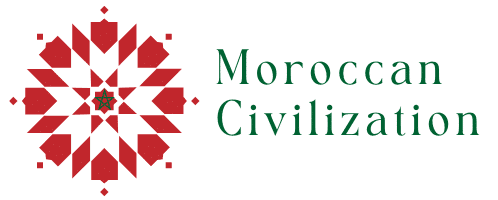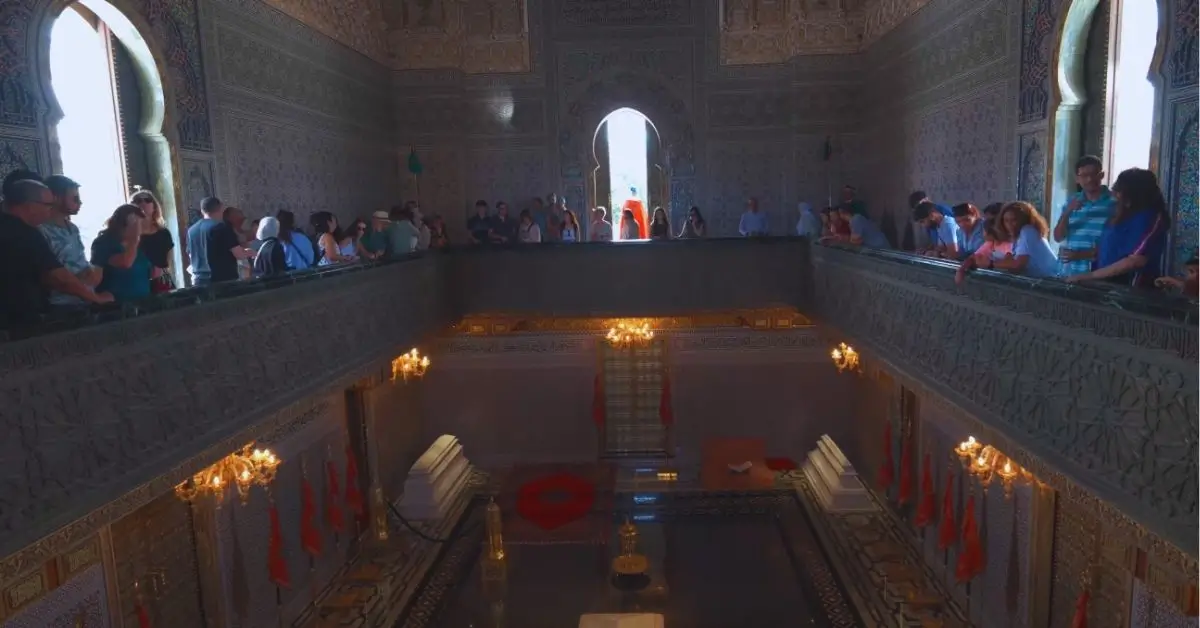I Found Rare Peace in Rabat: Top 1 Capital of Morocco Africa
As someone grounded in Casablanca’s rhythm and deeply rooted in Taounate’s ancestral pulse, I’ve always looked for places in Morocco that hold both spirit and structure. When I arrived in Rabat, the capital of Morocco Africa, I wasn’t expecting it to feel so familiar—so quiet in its power.
Table of Contents
Where the River Meets the Sea and the Soul Finds Silence
I came from Fes with my thoughts still wrapped in the scent of leather and the song of the muezzin. But Rabat didn’t greet me with fanfare. It welcomed me with calm. A city where the ocean breathes, the past lingers, and the future walks gently forward.
Arrival and First Impressions
From Fes to the Capital
The train ride from Fes to Rabat was smooth, almost meditative. I stared out the window watching Morocco shift—olive groves melting into open fields, the red earth becoming greener, softer. Fes had left a spiritual echo in me, but it was intense, crowded, rooted in history’s heavy shadow. Rabat, I hoped, would bring me something different—something lighter.
And it did.
When I stepped out of Rabat Ville station, the city opened like a breath I didn’t know I was holding. You don’t hear car horns screaming like in Casablanca. The sidewalks are wide. The air is brisk, salted by the Atlantic. Even the sky looked bigger. It didn’t take long to feel that Rabat, the capital of Morocco Africa, is not just about government buildings or embassies. It’s about balance.
Sensing a Different Morocco
My hotel was tucked in a quiet street near the Medina’s edge. A small room with a terrace where the sound of seagulls played with the hum of scooters. From there, I walked toward the Bou Regreg River, guided by nothing but instinct and the scent of grilled sardines. That’s when it hit me: Rabat carries itself with humility. It’s not loud. It doesn’t compete. It offers.
As I made my way through the city’s fabric, I didn’t feel like a tourist. I felt like a Moroccan discovering a version of his country he hadn’t met yet. One that whispers instead of shouts. And it all started at the water’s edge.
A City by the Water
Crossing the Bou Regreg River
I didn’t plan to take the boat. I was just walking toward the river when I saw an old man untying a small wooden skiff, his hands slow but certain. I nodded. He gestured for me to hop in. No ticket, no schedule — just rhythm. That’s how it works here.
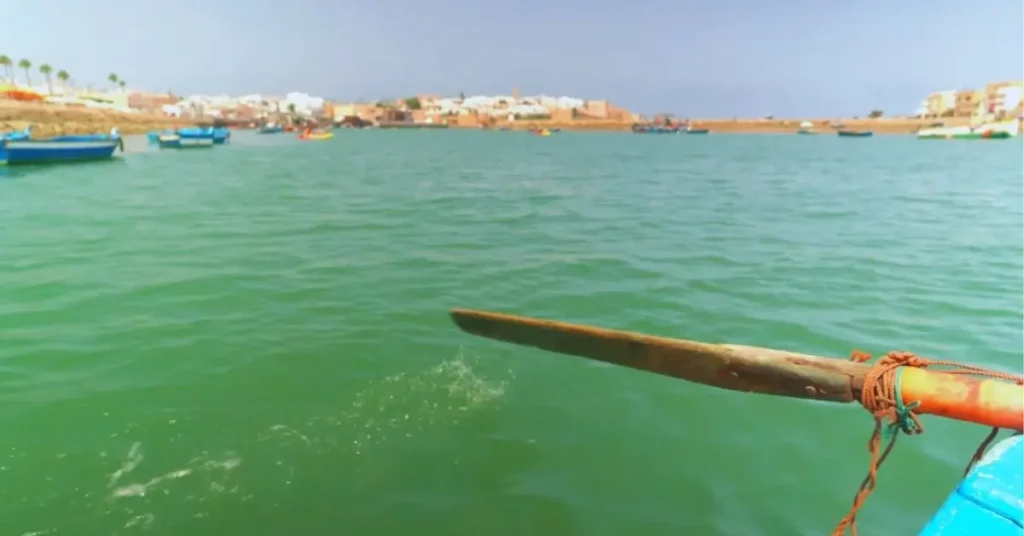
The Bou Regreg was calm that afternoon. As we glided across, the only sound was the dip and pull of the oars. On one side, Rabat’s Medina rose in warm, earthen colors. On the other, Salé — quieter, older — held its own kind of grace. I saw a man crouched by a grill, flipping sardines, smoke curling around him like incense. Somewhere nearby, a call to prayer floated over the water, soft and steady.
The boatman didn’t speak. He didn’t need to. We were in the middle of a city, but it felt like being between worlds. And maybe we were.
The Coastline of Morocco in Rabat’s Light
I walked along the river until it met the sea. That curve where river and ocean join — it does something to you. The coastline of Morocco here isn’t flashy. It doesn’t shout for attention. It just unfolds — wide beaches, open sky, air that tastes of salt and possibility.
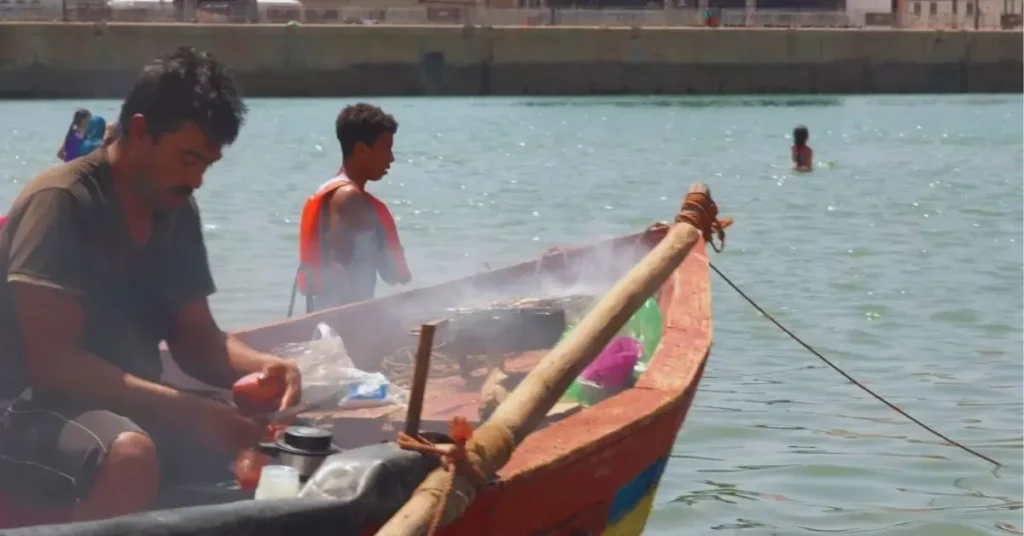
Rabat may be the capital of Morocco Africa, but it never forgets the sea. That evening, I sat on the rocks near the beach. Teenagers drummed on plastic buckets. A girl danced barefoot in the sand. A woman roasted corn on a tiny grill, brushing it with butter and cumin. I bought one and sat quietly, the waves echoing just beyond my feet.
Across the water, lights began to flicker in Salé’s windows. The sky turned lavender. For a moment, I didn’t feel like I was in a capital city. I felt like I was somewhere ancient, somewhere that remembered everything — but demanded nothing from me at all.
Medina Without Rush
A Genuinely Moroccan Medina
Rabat’s medina surprised me. After years of weaving through the crowded souks of Marrakech and getting gently (or not-so-gently) pulled into carpet shops in Fes, I braced myself for more of the same. But here? It was different. No shouting. No pressure. Just people going about their day — as if the presence of visitors didn’t shift their rhythm at all.
I wandered without a map. A boy passed by holding a tray of bread wrapped in a cloth, probably delivering it to a neighbor. Men sipped tea near a hardware shop. Women walked side by side in soft chatter, their baskets filled with herbs and small fish. The walls were faded but warm, painted with sun and salt over the years.
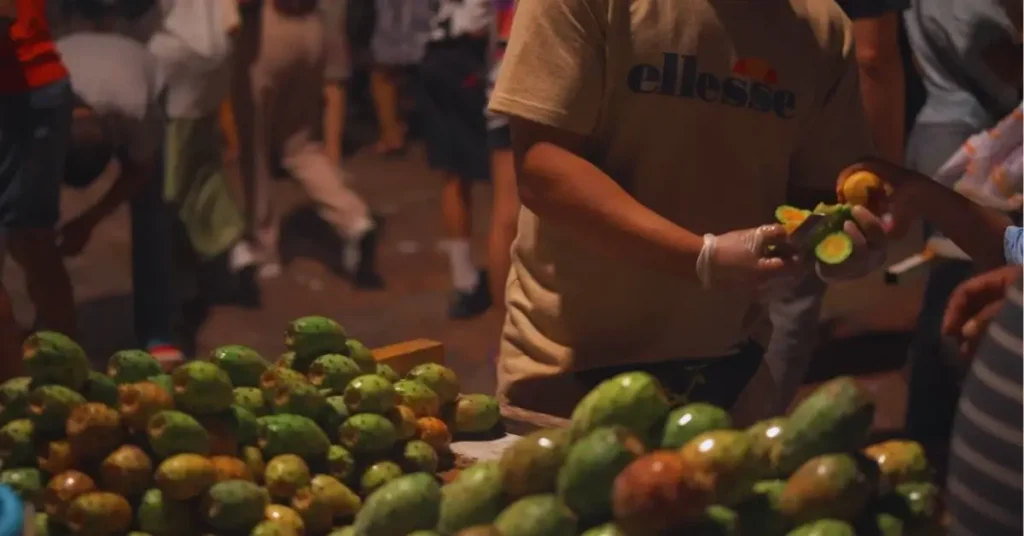
I didn’t feel like I had to buy anything. I just had to be present.
And that, maybe, is the magic of the capital of Morocco Africa — it doesn’t perform. It simply lives.
Street Bites and Sugarcane Memories
It was the scent that pulled me in. Sweet, fried, and familiar. I found the sfenj vendor tucked behind a corner — an old man twisting dough with practiced hands and dropping them into oil that hissed like rain. I bought two for five dirhams. Hot, golden, crispy at the edges and soft inside. I stood in the shade and ate them with my fingers. No napkins. No table. Just joy.
Further down the alley, a young man was pressing sugarcane juice with lime and ginger. I watched the liquid swirl, pale and green, frothy at the top. It tasted cold, sharp, a little spicy. It took me straight back to the Rif — to souks where Morocco’s scent is a mix of mint, fried fish, and memory.
This is still a place of rituals. But they’re small ones — sipping juice in silence, sharing fried dough at dusk. In the capital of Morocco Africa, even the simplest acts carry heritage. That’s the kind of richness you can’t frame in facts about Morocco or pin down on a map. You have to feel it, bite by bite.
Ville Nouvelle and Colonial Echoes
Walking Along Mohammed V Avenue
From the heart of the medina, I walked into a different Morocco. Mohammed V Avenue opened wide before me — palm trees lining the sidewalks, art deco buildings whispering stories from the colonial past. This was the ville nouvelle, the “new city,” built when France ruled here, but now deeply woven into Morocco’s own urban identity.
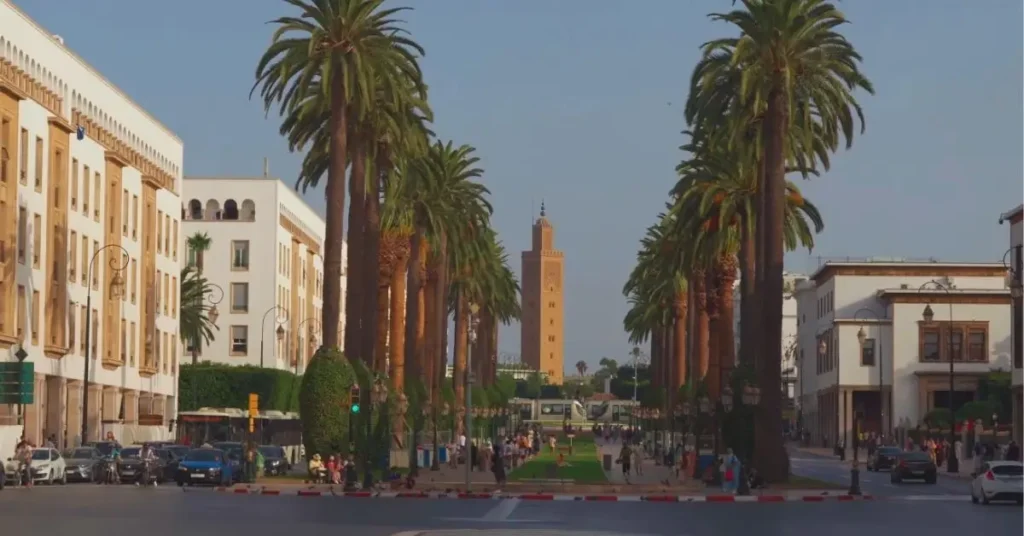
Here, Rabat shows another face — not louder, just more composed. Government offices stand next to cafés filled with students, diplomats, and families. People walk slowly, not with the urgency of Casablanca, but with the calm confidence of a city that knows who it is. That’s the thing about being the capital of Morocco Africa — Rabat doesn’t have to shout to prove itself. It has presence.
I passed the Parliament building, the red flag waving above it. I thought about how many global decisions pass quietly through this city’s halls. But for me, the real power of Rabat was in the details: a grandmother feeding pigeons on a bench, a teenage couple sketching on the curb, a street musician playing oud beneath an orange tree.
This city carries its title with grace.
Architecture of Blended Histories
What I love about Rabat — and I felt it especially here in the ville nouvelle — is how layered everything is. The French laid down wide boulevards and train stations, but Morocco claimed them back with soul. The windows have zellige details. The doorways are arched. Even in buildings that reflect Europe, you still see Africa, still feel Morocco’s history breathing.
It made me think about the question people often ask: “Where is Morocco, really? Is Morocco a country in Africa or part of the Arab world?” My answer after walking these streets is: it’s both — and more. Morocco isn’t stuck in a single identity. In Rabat, you see that truth. You see the Africa in its soil, the Arab in its calligraphy, the Amazigh in its soul.
That’s why the capital of Morocco Africa matters. It holds space for all those truths. In the architecture, in the people, in the silence between the streets.
Symbols of Power and Heritage
Hassan Tower’s Unfinished Majesty
You don’t really understand Rabat until you stand before the Hassan Tower.
I arrived late in the afternoon. The sky was pale blue, and the sunlight stretched long across the stone floor. The tower rises up confidently, yet something about it feels unresolved. That’s because it’s unfinished — it was meant to be the tallest minaret in the world, part of a grand mosque commissioned in the 12th century. But the sultan died, and then an earthquake hit. The dream paused.
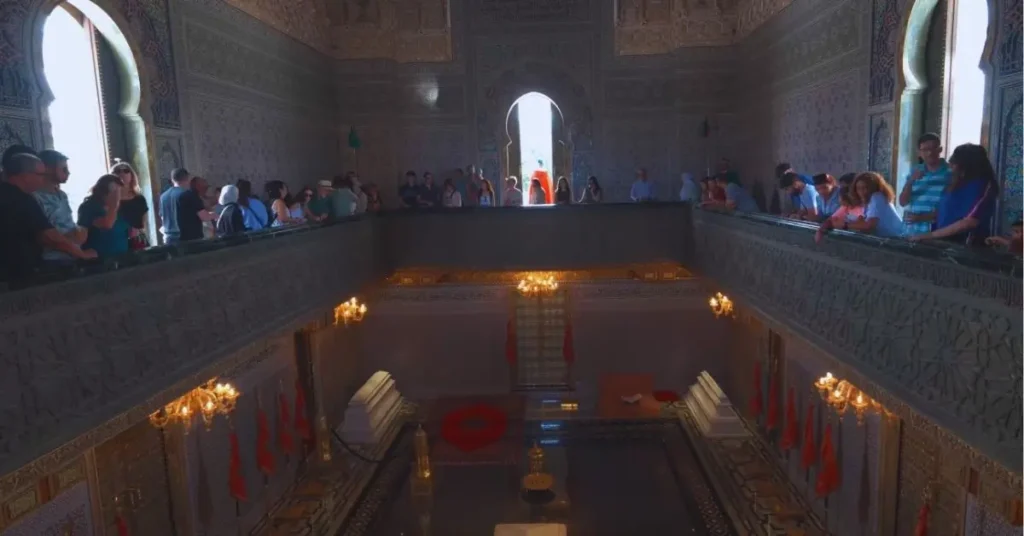
Yet here it stands, still. Still bold. Still beautiful.
I walked around the scattered pillars. Tourists snapped photos, but I stood quietly. There was something sacred about the imperfection — how even in the capital of Morocco Africa, greatness doesn’t always come from completion. Sometimes, just trying matters more.
It reminded me of Morocco itself. A country always in motion, always becoming. Not flawless, but alive.
Mausoleum of Mohammed V
Across from the tower is the mausoleum — stark white, with a green tiled roof that catches the sun like a jewel. Inside lie the remains of King Mohammed V and his sons, including Hassan II. Guards in red uniforms stand like statues outside, but the moment you step in, everything becomes hushed.
I took off my shoes, stepped inside, and felt the weight of history. The room was silent except for the echo of footsteps on marble. Around me, intricate plasterwork, cedar ceilings, and Qur’anic verses surrounded the royal tomb.
It hit me then: this is where Morocco’s modern journey began. The king who helped lead us to independence is buried right here, in the capital of Morocco Africa — not hidden in grandeur, but placed where the people can still visit.
There’s a reason Morocco is so famous — not just for spices or souks, but for the way it holds onto memory. The mausoleum isn’t just a monument. It’s a message. It says, “We remember where we come from.”
And that message is woven into Rabat — from the Bou Regreg to the Atlantic, from the medina to the ministries. You feel it in your bones. This is not just a capital. It’s a keeper of soul.
Reflections on Rabat
Morocco’s Capital of Spirit and Balance
On my last morning in Rabat, I sat on the rooftop of my hotel with a small glass of coffee and watched the city wake up. The sky was soft. The call to prayer had just ended, and below, the rhythm of the streets returned — measured, unhurried. There was no rush, no weight. It was the kind of peace you don’t expect to find in a capital city.
But Rabat isn’t a city that performs.
It doesn’t try to sell you a dream. It just is. You have to slow down to understand it. And maybe that’s why it stayed with me. While other cities push forward, Rabat stands its ground — calm, quiet, steady. That, to me, is the real power of the capital of Morocco Africa. Not its ministries or embassies, but its ability to hold tradition and time without shouting about it.
In the medina at night, I saw families gathering on benches, kids chasing pigeons, vendors grilling sardines under flickering bulbs. No one was putting on a show. It was just life — Moroccan life. Real, honest, and beautiful.
Why I’ll Return
There are cities that demand your attention, cities that exhaust you, cities that leave you dazzled but a little empty. Rabat isn’t one of them. It’s a city that offers space — for thought, for rest, for presence.
For me, it was the way the river met the sea, how the wind carried both salt and memory, how even the unfinished Hassan Tower stood tall with dignity. It was the food I ate with my hands. The prayers I heard from rooftops. The way strangers nodded instead of selling.
Rabat reminded me that Morocco is not just color and chaos. It’s also patience. Grace. Quiet resilience.
And when I think of where I felt most at peace — where my feet moved slow and my heart moved fast — it wasn’t in the crowded medinas or the flashy souks. It was here, in the capital of Morocco Africa, where things don’t need to be loud to be true.
That’s why I’ll come back.
Not to escape. But to remember.
Rabat isn’t a city that ends when you leave it. It lingers — like salt on your skin after walking the coastline, like the smell of grilled fish in your clothes, like that still moment crossing the river as the sky fades.
I’ve seen the fire of Marrakech, the depth of Fes, the energy of Casablanca. But Rabat? Rabat is where Morocco exhales. It’s where memory walks beside you, where the past isn’t just preserved — it’s lived. You feel it in the way the call to prayer blends with ocean wind, in the old man pouring mint tea for himself and no one else.
If someone asked me, “Where does Morocco find its balance?” — I’d say, without hesitation: here. In the capital of Morocco Africa, where the sea meets the river, and something eternal meets the everyday.
And if you ever need stillness, if you ever need to feel Morocco without the noise — come to Rabat.
Let it speak to you.
